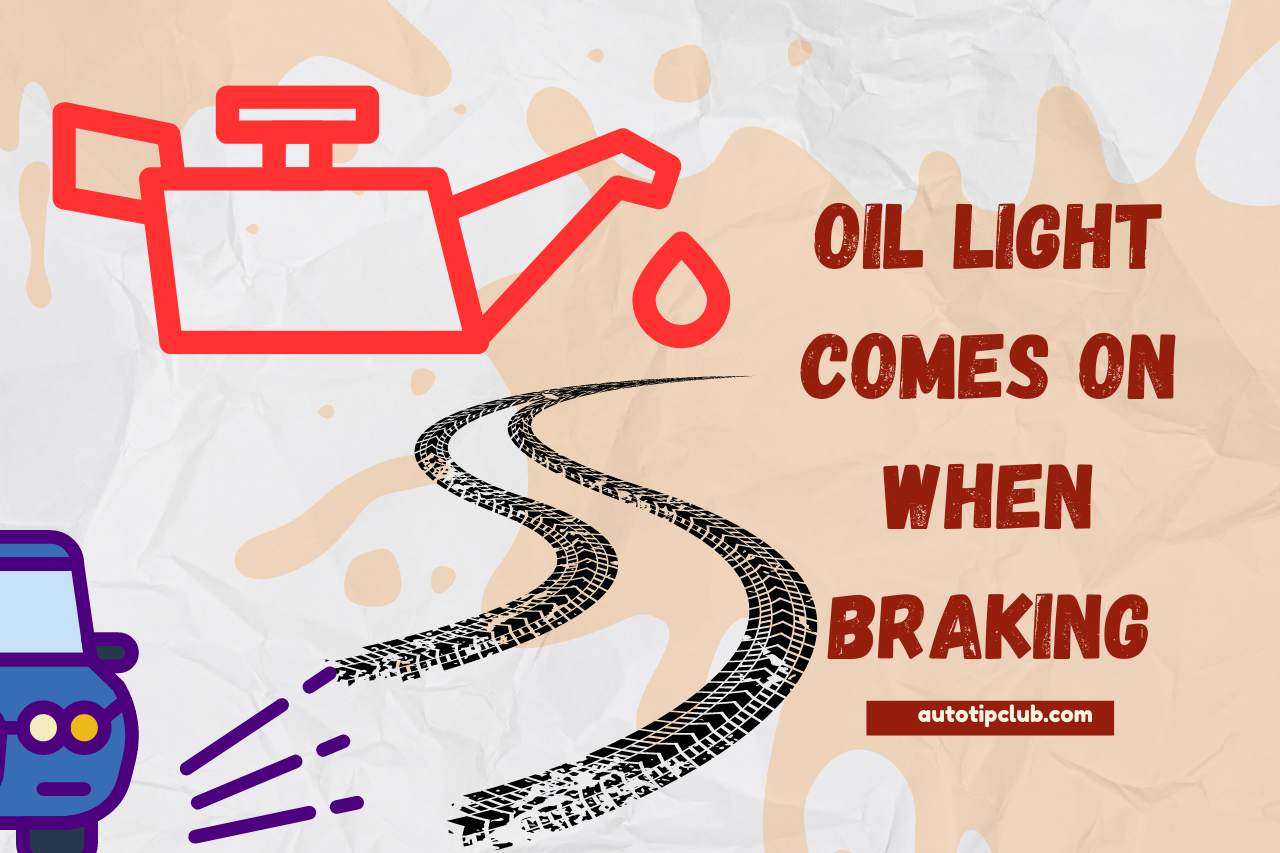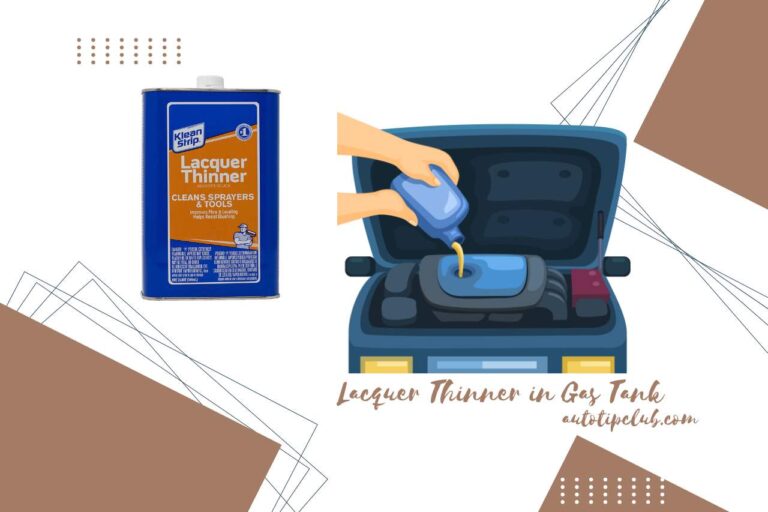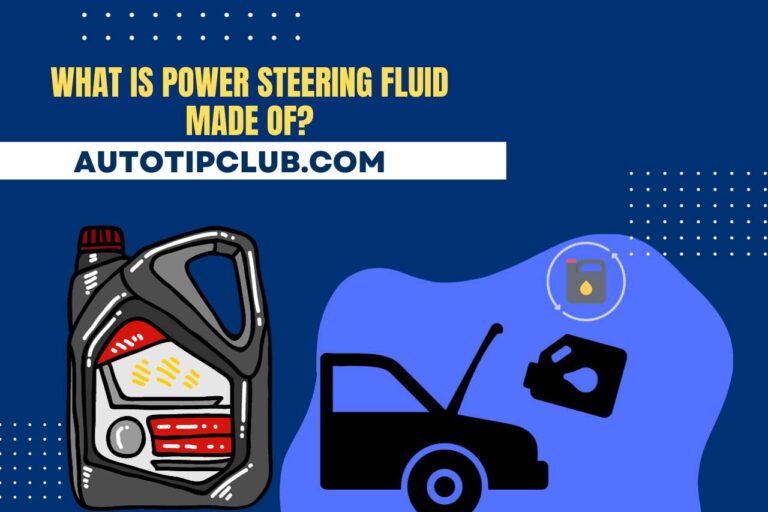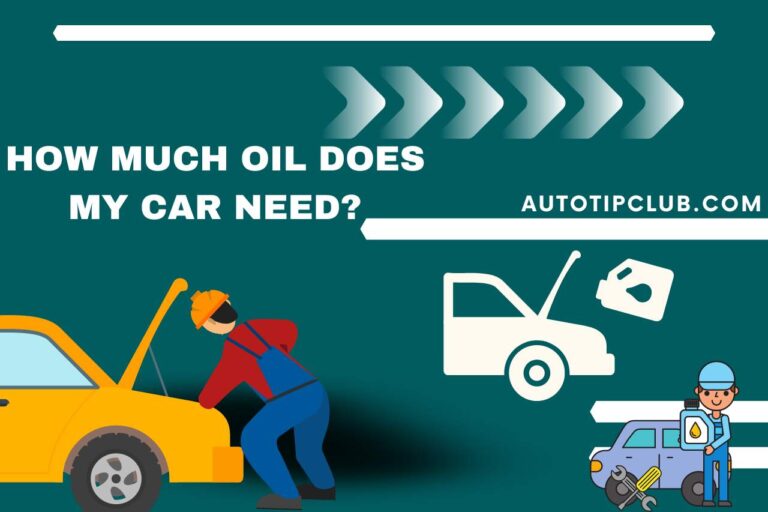Oil Light Comes on When Braking? [Causes and Fixes]
Have you ever experienced the perplexing situation where your oil light flickers when you engage the brakes? It’s a scenario that can stir concern and confusion for any driver.
In this comprehensive guide, we discuss the relationship between your vehicle’s oil system and braking mechanism, exploring the reasons behind the mysterious occurrence of the “Oil Light Comes on When Braking.”
Why Does the Oil Light Come on When Braking?
If you find yourself witnessing the oil light come on when applying the brakes, it’s mostly because of the faulty oil pressure sensor. In addition, low oil levels and worn engine bearings also can cause the brake light to flicker when braking. Let us explain these in detail.
Faulty Oil Pressure Sensor
When your vehicle’s oil light comes on during braking, one potential culprit is a faulty oil pressure sensor. This component plays a pivotal role in monitoring the engine’s oil pressure, ensuring optimal lubrication.
Here’s a detailed exploration of what a faulty oil pressure sensor entails and how it may be linked to the phenomenon you’re experiencing.
How a Faulty Oil Pressure Sensor Relates to Braking
The act of braking can momentarily disrupt the distribution of oil within the engine. A faulty sensor might misinterpret this shift as a significant drop in oil pressure, triggering the warning light.
Ignoring a faulty oil pressure sensor can lead to inaccurate pressure readings. This may mask genuine oil pressure issues or, conversely, create unnecessary concern, impacting your confidence in the vehicle’s performance.
Signs of a Faulty Oil Pressure Sensor
One key sign is the illumination of the oil light, especially during braking. However, other symptoms may include erratic oil pressure readings on the gauge.
Addressing a Faulty Oil Pressure Sensor
If you suspect a faulty sensor, it’s crucial to consult a professional mechanic. They can conduct a thorough diagnostic to determine if the sensor needs replacement or if there are underlying oil pressure issues.
Low Oil Levels
If you’ve noticed the oil light flickering during braking, low oil levels could be a significant contributor to this perplexing occurrence. Understanding how low oil levels affect your engine’s performance during braking is crucial for maintaining optimal vehicle health.
How Low Oil Levels Affect Braking
Braking induces a shift in the distribution of oil within the engine. With insufficient oil, this shift can lead to a momentary drop in oil pressure, triggering the oil light during braking.
Insufficient lubrication can result in increased friction and wear among engine components. This can escalate the risk of engine damage, affecting overall performance.



Signs of Low Oil Levels
Keep an eye on your oil level indicator on the dashboard. If it consistently indicates low oil levels, it’s a clear sign of potential issues.
Addressing Low Oil Levels
Regularly check your oil levels using the dipstick and adhere to recommended oil change intervals. If you notice persistent low levels, promptly add the appropriate oil type and viscosity recommended by your vehicle manufacturer.
Proactively monitoring and maintaining proper oil levels not only addresses braking-related issues but also ensures the longevity and efficiency of your engine.
Worn Engine Bearings
If you’ve observed the oil light flickering during braking, worn engine bearings could be another underlying cause demanding your attention. Understanding how these critical components affect your vehicle’s performance during braking is essential for maintaining the longevity and efficiency of your engine. Let us explain.
How Worn Engine Bearings Impact Braking
Engine bearings are vital for reducing friction between moving parts. When these bearings wear down, increased friction and stress can occur during braking, potentially causing a momentary drop in oil pressure and triggering the oil light.
Ignoring the signs of worn engine bearings can lead to progressive damage, affecting engine performance, fuel efficiency, and, in severe cases, complete engine failure.
Signs of Worn Engine Bearings
Recognizing the symptoms, such as unusual engine noises (knocking or tapping), low oil pressure, or increased oil consumption, can indicate potential wear on engine bearings.
Detecting and Addressing Worn Engine Bearings
If you suspect worn engine bearings, consult a professional mechanic for a thorough inspection. Early detection and replacement can prevent further damage and maintain your engine’s health.
Regularly servicing your vehicle, including oil changes and inspections, helps detect early signs of bearing wear. Prompt attention to these issues contributes to the overall longevity and reliability of your engine.
What Should You Do If the Oil Light Comes on When Braking?
If you find yourself in a situation where the oil light comes on when applying brakes, it’s crucial to act promptly. Here’s a step-by-step guide on what you should do:
1st Step – Pull Over Safely
When it’s safe to do so, pull over to the side of the road. Avoid abrupt maneuvers and find a secure location.
2nd Step – Turn Off the Engine
Once safely stopped, turn off the engine immediately. This helps minimize potential damage to the engine components.
3rd Step – Check Oil Levels
Pop the hood and check your oil levels using the dipstick. If levels are low, add the recommended oil type and viscosity.
As we explained earlier, this is the only thing you can observe as identifying a faulty oil pressure sensor or engine bearings might not be an option at this stage.
4th Step – Inspect for Leaks
Look for any visible signs of oil leaks under the vehicle. Leaks can contribute to low oil levels and should be addressed promptly.
5th Step – Wait and Restart
After addressing oil levels or potential leaks, we recommend waiting a few minutes before restarting the engine. Monitor the oil light – if it remains off, you can cautiously resume driving.
6th Step – Seek Professional Help
If the oil light persists or you’re uncertain about the cause, it’s crucial to consult a professional mechanic. They can conduct a thorough inspection to identify and address any underlying issues.
How to Know If the Issue Is Caused by the Faulty Oil Pressure Sensor?
If the oil in your vehicle is at the correct level and notice no oil leak, the culprit might be the faulty oil pressure sensor. If you suspect a faulty oil pressure sensor is behind the issue of the oil light coming on during braking, here’s how you can pinpoint the problem.
Check for Consistent Illumination
Pay attention to when the oil light illuminates. If the oil light illuminates during braking and not in other driving scenarios, it suggests a possible link to the sensor.
Monitor Oil Pressure Readings
We recommend investing in an oil pressure gauge if your vehicle doesn’t have one. Regularly monitor the gauge readings, especially during braking. If there are erratic or unusually low readings, the sensor might be at fault.
Perform a Diagnostic Test
Consult a professional mechanic for a diagnostic test. They can use specialized tools to assess the functionality of the oil pressure sensor and determine if it’s sending accurate signals.
Inspect Wiring and Connections
Examine the wiring and connections associated with the oil pressure sensor. Loose or damaged connections can lead to inaccurate readings. Ensure everything is securely connected.
Listen for Engine Noises
If the sensor is malfunctioning, it might not register actual oil pressure issues. Listen for unusual engine noises, as these can be indicative of genuine pressure concerns.
How Can I Check My Car’s Oil Level and Pressure?
Your car must be parked in a plain without bumps, hills, or slopes to check your oil level. Then you must take the hood off your vehicle and find the dipstick.
You can remove it, clean it using a cloth, and put it back on. Then remove it again and keep it horizontally to check the level of your oil. You are good if the level is between maximum and minimum marks. Read our guide on “How much oil does my car need” to learn more about this.
The oil pressure will be measured using an oil gauge; red or orange lights will illuminate if the oil pressure surpasses a certain level. This works with an oil pressure sensor as well.
How Often Should I Change My Car’s Oil?
You should check the condition of your car’s oil while doing the oil level test to see if your oil seems amber to dark brown you have nothing to worry about. However, if your oil seems a bit blackish and slushy, you must immediately consider changing your oil.
We recommend changing oil every 3000 miles at least, as it will cause bad endings if you run on lousy oil.
If your car is giving you nightmares by appearing in oil lights, you must also get your oils checked for better precautions.
Can Driving with the Oil Light on Cause Engine Damage?
Driving with the oil light on when braking might not cause damage to the engine immediately. Whatever the reason might be, running on low oil with a notification in front of your eyes would not be the ideal decision that you want to take.
Thus, you must be careful not to drive while the oil light is on. You must immediately stop the car and consult professional advice to learn about fixing the problem.
How to Prevent the Oil Light from Coming On When Braking?
To ensure the oil light doesn’t interrupt your drive during braking, we have listed some useful tips below.
-
- Monitor your oil levels consistently using the dipstick. Ensure they are within the recommended range to maintain proper lubrication.
- Adhere to the manufacturer’s recommended oil change intervals. Fresh, high-quality oil helps sustain optimal engine performance.
- Select the oil type and viscosity recommended for your vehicle. This choice ensures compatibility with your engine’s specifications.
- Regularly inspect your vehicle for any signs of oil leaks. Promptly address and repair leaks to prevent oil level depletion.
- Keep your engine in top condition by following scheduled maintenance. Address issues promptly to prevent wear on critical components.
- Adopt a smooth and gradual braking technique to minimize stress on engine components. Avoid abrupt stops that could lead to oil pressure fluctuations.
- If you notice symptoms of worn engine bearings or other components, consult a professional mechanic. Timely repairs prevent potential issues during braking.
- Invest in a quality oil pressure gauge. Regularly check the gauge readings to identify any abnormal fluctuations, enabling early intervention.
Related Articles
- Can you Mix Power Steering Fluid?
- Does Transmission Fluid Expire?
- How Far Can I Drive on Low Transmission Fluid?



My name is Robot McCullum, and I’m an Automotive Engineer with 20+ years of experience in the automotive field. I’ll give you step-by-step instructions for recognizing and fixing complicated technical problems in an uncomplicated manner. www.AutoTipClub.com, is your best resource for in-depth tutorials, insightful tips, and practical advice designed and developed either for seasoned vehicle collectors or daily drivers.



![How Long Does an Oil Change and Tire Rotation Take? [Find Out]](https://autotipclub.com/wp-content/uploads/2022/12/How-Long-Does-an-Oil-Change-and-Tire-Rotation-Take-768x512.jpg)

![How to Reset Oil Life on Chevy Malibu? [All About Chevy Malibu]](https://autotipclub.com/wp-content/uploads/2023/03/what-kind-of-oil-does-a-chevy-malibu-take-1-768x512.jpg)

